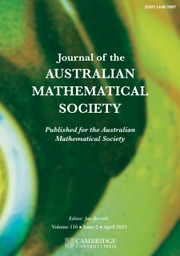Crossref Citations
This article has been cited by the following publications. This list is generated based on data provided by Crossref.
Caveny, Deanna M.
1996.
Commutative Algebraic Groups and Refinements of the Gelfond-Feldman Measure.
Rocky Mountain Journal of Mathematics,
Vol. 26,
Issue. 3,
Waldschmidt, Michel
2000.
Number Theory.
p.
497.
Waldschmidt, Michel
2000.
Number Theory.
p.
497.

